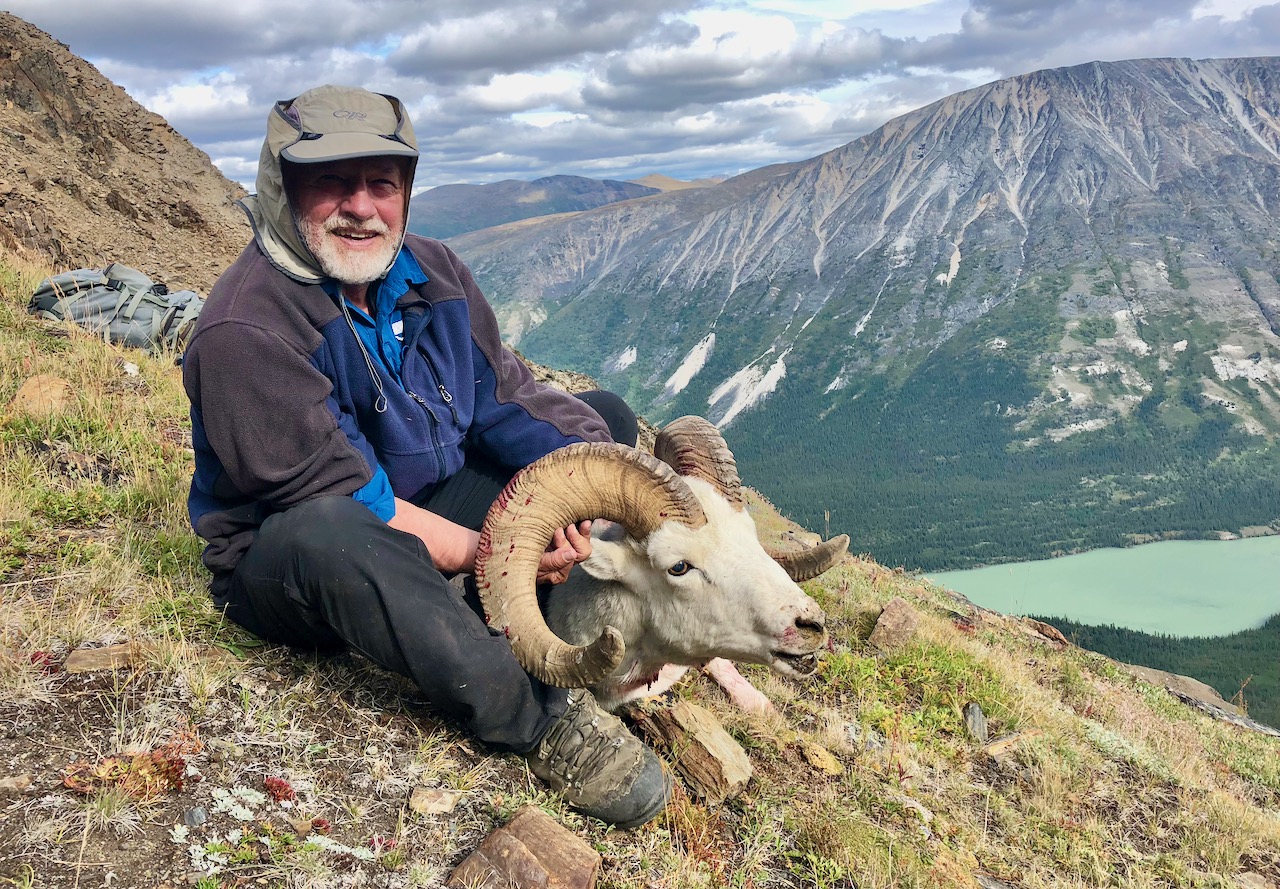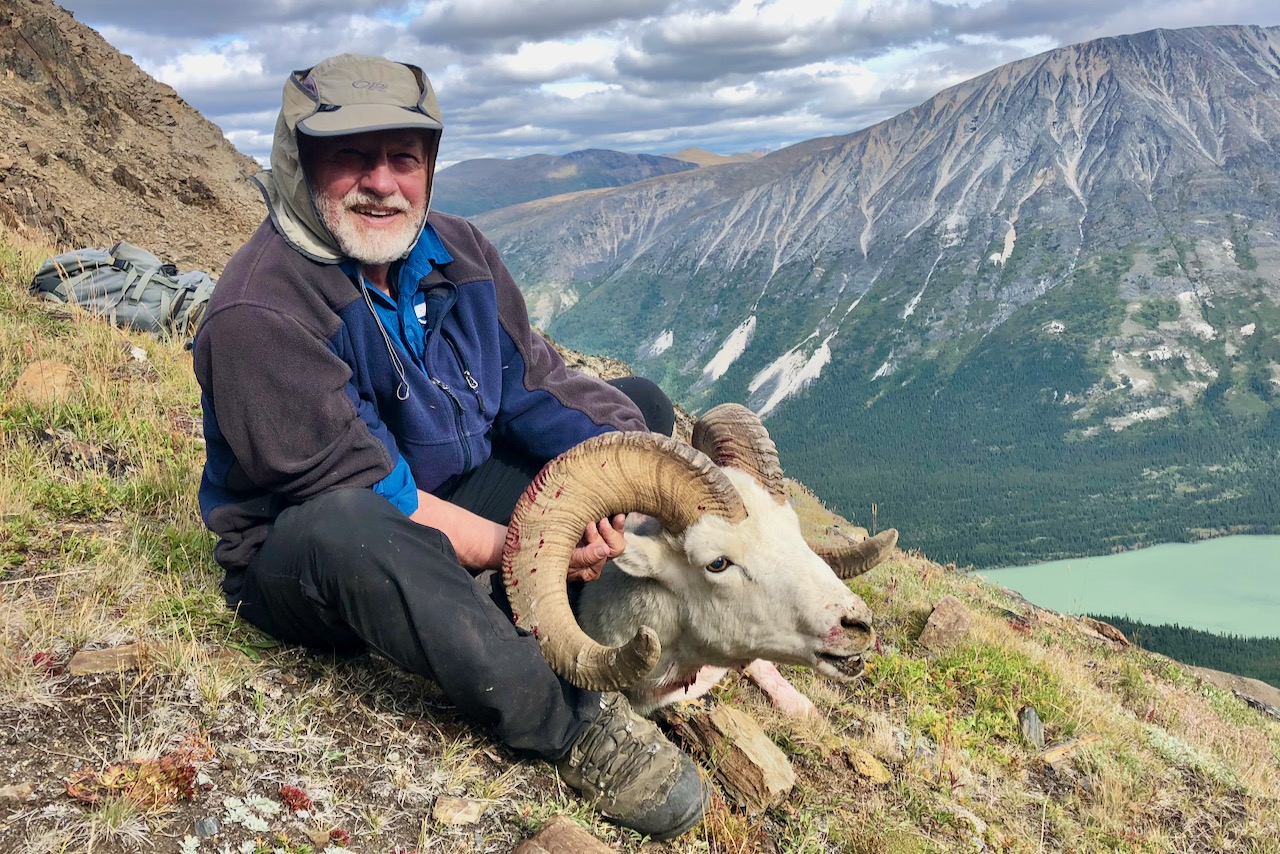LOFTY GOAL
When you’re obsessed with sheep, the Yukon’s high country beckons. The tale of one hunter’s quest for a really, really old ram
Advertisement

“How do you know he’s old?” I asked.
“It’s easy. Look for a swayback and a pot-belly. Then look at the face. Is he bright-eyed? If he looks kinda out of it, he’s had a good, long life and he’s not getting around very much anymore.”
Advertisement
“He lays around, thinks of what used to be, but he doesn’t have the zip to do it again.”
“Probably has poor teeth, too. That’s why he might be a loner, and really cranky. Nobody wants to put up with him.”
“Swayback, pot-belly, looks dull in the face—shoot that one.”
Advertisement
I straightened my back, sucked in my stomach, opened my eyes a little wider and smiled brightly. “I can do that.”
“And look for dark horns, broomed and chipped up a bit. That’s a fighter.”
I was remembering those snippets of conversation as spring rolled around back in 2018, gems of wisdom disguised as advice at a Yukon sheep hunters’ gathering. They were terms of endearment, too, for old Dall’s rams, seemingly disparaging remarks, yet directly correlated to admiration.
Soon after, my limited entry sheep permit for zone 7-22 arrived in the mail from the Yukon Department of Environment. That’s the Game Branch, for you other old-timers. I was elated. “This year, we go up there and look for a big old ram. And if we can’t find a really, really big one, we’ll try for a really, really old one,” I said to my then 35-year-old son, Graeme.
In our family, when you say “really” twice, you really, really mean it. Some people add cuss words or swear for emphasis. That’s not the Mennonite way. We just say “really, really,” and add “for sure” if needed.
“Let’s do it,” Graeme replied. “For sure.”
Two weeks later, another letter arrived from the Game Branch: permit rescinded. Oh well, I thought, there are old Dall’s in other places, so I did some research. How old is old for a ram? Surely, Google had an answer for that, too.
I found a study on ram mortality by wildlife biologist Olaus Murie, conducted long ago in Alaska’s Mount McKinley National Park, now called Denali. He collected the horns of 608 rams—all dead, of course—and counted the annuli, or growth rings. The study included lots and lots of numbers on a chart. They were meaningful. They were all over the page, with no pictures. It was exhausting. Better come back to this some other time, I thought.
Then two weeks later, another letter came. The permit was now “un-rescinded.” God works in mysterious ways. So does the Game Branch, it would appear.
With the hunt back on, I made a strong cup of coffee and revisited Olaus Murie’s ram mortality chart. Aha! There were some words there I hadn’t seen last time. They explained the numbers. The 608 Denali rams had been “extrapolated,” or turned into 1,000 for statistical comparison. So, how many rams per 1,000 lived to be 10? The chart said 439. Another 252 made it to age 11, and 96 lived to be 12. After that, only six lived to be 13, and just three saw the age of 14. Beyond 14? Well, let’s just say this is no country for old men.
In the two weeks allotted for our hunt, we expected to see no more than 100 rams. That was only a tenth of the Denali study’s total, so I simply divided the data by 10 to get a picture of what we might expect to find. Our goal was to get a 13- or 14-year-old. According to my calculations, however, there would only be 0.6 of a 13-year-old and a mere 0.3 of a 14-year-old. That’s not even a complete ram when you combine the two age groups.
Such meagre math didn’t dissuade us, though, so we carried on, turning to social media for hints on finding a worthy ram. I typed in “plenty of rams.” Pictures of a California football team popped up. Clearly this was not the right strategy. We had to do something real—go to where the Dall’s live, and look them over in person.

